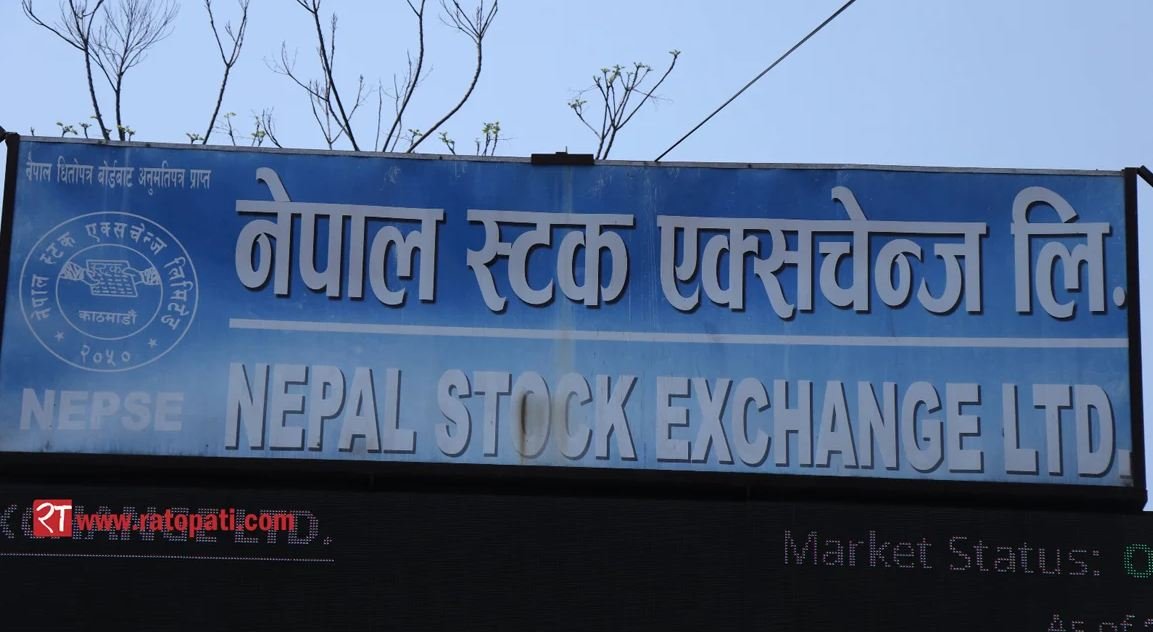Market stability anticipated post-Dashain, investors seek clarity

Kathmandu, October 15 — After a five-day long holiday for Dashain, the stock market will reopen today (Tuesday). The market, which closed after trading on Wednesday last week, is set to open today.
Investors did not feel a significant gap in stock trading during this Dashain. The market usually closes on Fridays and Saturdays, and since the holiday period overlapped this time, it was only closed for three extra days. Additionally, due to the absence of the ninth day, this Dashain seemed shorter than usual.
Before Dashain, the stock market was quite volatile. On August 15 (31st of Shrawan), the market index touched the 3000 mark, but it has been on a downward trend for about two months since then. Amidst the fluctuations, the market saw a correction, dropping to 2464 points by the second week of October. However, after some recovery, it is currently at 2668 points.
Although the past two months have been disappointing, the last two weeks have provided some relief. The question now is where the market will head after Dashain? This is what those investing in listed companies and showing interest in the stock market are keenly looking to answer. There are two perspectives on this. Some argue that since there was not much of a gap during Dashain and no significant policy changes occurred, the market will likely remain stable. Others analyze that the situation post-Dashain will be different and may exhibit various outcomes.
What’s the difference between before and after Dashain?
Tulsi Dhakal, president of the Nepal Investors Forum, states that there is a fundamental difference between the situations before and after Dashain. Specifically, due to factors like the economy, the state of the financial sector, the end of the first quarter, the dividend season, and the reconstruction after floods and landslides, the upcoming market is expected to be different. He anticipates that most factors will likely push the market in a more positive direction.
We are currently at the end of the first quarter. The time for banks to pay interest and installments and for the government to collect revenue is in its final stages. However, the time for selling shares has already passed before Dashain. Since it will take at least two days to receive payment for shares sold tomorrow, Dhakal suggests there will be no pressure from the quarter's end on the market, which could help elevate it further.
The season for declaring dividends for listed companies has also begun. While several dozen institutions have already announced dividends, many companies are yet to do so. Due to the requirement to finalize financial statements and submit taxes by October 16, dividend announcements are expected to increase, which is anticipated to energize the market.
However, there is also a risk that negative impacts from dividend announcements may affect the market. Due to the economic downturn, many companies may not be in a position to pay dividends this year. Even some companies that can provide dividends have weaker financial results compared to the past. Therefore, announcing minimal dividends may lead to disappointment among investors, which Dhakal acknowledges as a risk.
Recently, some signs of dynamism in the economy have begun to appear. The enthusiasm that was not seen until August 15 has manifested in the past few weeks. Currently, there is an increase in demand for loans from banks. On the last day before the Dashain holiday, nearly 7 billion rupees in loans were disbursed in a single day. In the months of Bhadra (August-September) and Ashwin (September-October), over 8 billion rupees in loans have been released into the market. This situation is likely to invigorate the economy, thus providing positive energy to the market, according to Dhakal.
However, there is also a potential for negative impact. As demand for loans increases, interest rates may rise, which could adversely affect the stock market. Nonetheless, Dhakal argues that since interest rates are currently at a very low level, a one or two percent increase in rates may not significantly impact the market.
Dhakal also views the commencement of production and construction activities in the economy after Dashain positively. He believes that the government’s spending on the reconstruction of damaged infrastructure due to floods and landslides will flow into the financial sector soon, potentially having a positive effect.
Dhakal notes that there have been signs of positive impact on the economy recently. “The government has spent more than 20 billion in capital expenditures in the first three months, and reports indicate that international flights are beginning at Gautam Buddha and Pokhara airports,” he says. “All these developments are signs of economic improvement. This situation will also boost the psychology of the capital market.”









Leave Comment